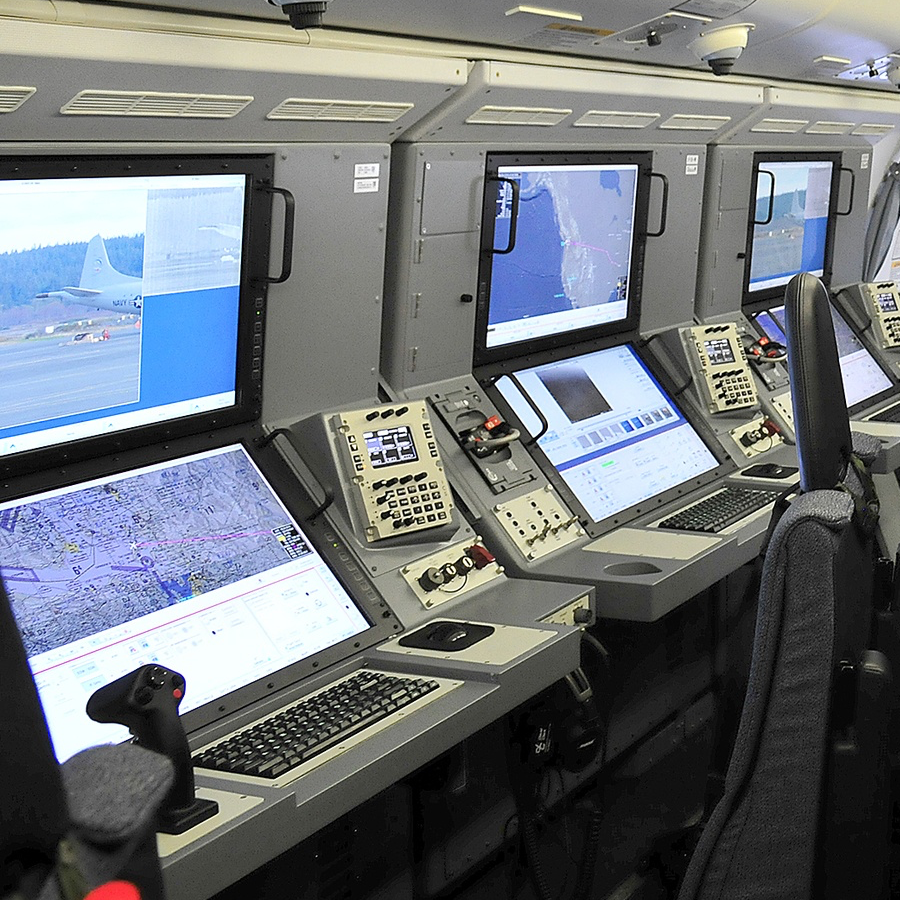Design Validation
Back to ProjectsHelping the U.S. Navy achieve significant software change reductions on the P-8A Poseidon Aircraft
Summary
As a Human-Systems Engineer on the P-8A Poseidon maritime patrol aircraft program, I helped the U.S. Navy achieve significant reductions in software changes through an iterative user-centered design process. By involving active duty operators early and often through prototyping and user testing, we were able to identify issues before production resulting in a 78% decrease in change requests.
Problem Framing
The P-8A Poseidon is a multi-mission maritime patrol aircraft based on the Boeing 737-800. It replaces the aging P-3C Orion. A key challenge was designing the operator machine interface (OMI) for the five onboard workstations to support anti-submarine warfare, anti-surface warfare, intelligence, surveillance and reconnaissance missions.
With complex multi-function displays and controls, there was high potential for usability issues that could impact mission performance and operator workload. It was critical to get the OMI design right before ramping up production.

Role & Team
I was one of four human factors engineers responsible for OMI design and usability. I worked closely with Boeing subject matter experts, software developers, and test engineers in Design Coordination Teams to define requirements, review designs, and analyze test data.
Approach
We followed a user-centered design process with early and frequent involvement of the end users - U.S. Navy P-8A aircrews:
- Conducted design reviews with operators to get feedback on wireframes and proposed designs
- Built functional prototypes of high-risk areas for user testing in a lab environment
- Held Aircrew System Advisory Panel (ASAP) events twice a year where aircrews flew simulated missions to evaluate OMI usability and provide design change recommendations
- Captured quantitative human performance data and qualitative feedback to drive design improvements
Challenges
Some key challenges we faced:
- Translating complex mission and system requirements into intuitive, usable designs
- Minimizing display clutter and optimizing information layout for demanding missions
- Designing for compatibility with night vision goggles and sunlight readability
- Integrating new technologies like multi-touch displays with traditional controls like trackballs
Solution
Through the iterative user-centered design process, we evolved the OMI design to optimize usability and mission performance. Some key solutions included:
- Common display hierarchies and control concepts across workstations
- Streamlined access to critical functions for high workload situations
- Contextual display of information to maintain operator situational awareness
- Alerts and status indications to help manage system failures and degraded modes
P-8A workstation display screenshots
Results & Impact
The user-centered design approach allowed us to identify and resolve multiple usability deficiencies during the design phase. By the time the P-8A entered production, the OMI design was mature and well-aligned with aircrew needs.
As a result, software change requests related to OMI design decreased by over 78%, saving significant time and cost. The P-8A is now in service with the U.S. Navy as well as Australia, India, and the UK.

